This easy cast iron salmon recipe is done in less than 15 minutes and it's deliciously flavored with lemon and salmon. This dish is basted in butter and the salmon is moist and tender!

If you enjoy seafood, you may also enjoy these filets: Pistachio Crusted Fish or Lemon Garlic Broiled Flounder
Jump to:
Why this Recipe Works
Salmon is such a touchy fish. Some people love it and some hate it. When I was first learning to cook salmon, I hated it. It was either too moist or too dry. The skin was wet after it cooked and it absorbed ZERO flavor.
This recipe makes for the crispiest skin and a moist fish that is basted in lemon, dill, and garlic. The keys to the recipe are the cast iron pan, removing the water from the salmon if frozen, and the instant-read thermometer.
Salmon cooks very quickly once it is defrosted. Using the thermometer and getting that perfect temperature is what makes this recipe work.
Seafood also holds a lot of water when frozen. Without removing the water, it is difficult to get a good sear on the fish!
Ingredients and Substitutions
Dill. I love the combination of lemon and dill. Some other fresh herbs that can be substituted are thyme or rosemary.
Lemon. Depending on the herb, you could potentially switch it up and use lime. You'll still get the desired result.
Avocado oil. I prefer avocado oil with salmon because it doesn't have a lot of its own flavor like extra virgin olive oil does. You can use olive oil if that's all you have, but avocado oil would be preferred.
Step-by-Step Directions
Wild Atlantic salmon is only available fresh from spring through summer. Most of the time, I buy wild salmon (sockeye) frozen, but they retain a lot of water when they are frozen. The skin can become really wet and gross if you don't take care of this.
Step 1: Season both sides of the salmon with salt and pepper. I like to put strictly salt and pepper on the salmon because it will have fresh lemon and dill on it when it is cooked.

Step 2: Preheat the oven to 375°.

Step 3: Place your cast iron on the burner and bring it to medium-high heat. Once the cast iron is hot, add avocado oil. When the avocado oil is shimmering, add the salmon to the pan skin side down.

Step 4: While the salmon is searing, place the dill and lemon on top of the salmon. Sear for 2-3 minutes. Check the skin by carefully lifting up the edge of the salmon. The salmon will easily pull up from the cast iron when crispy

Step 5: Add butter to the pan with 1 crushed garlic clove. Use a spoon to baste the salmon with the butter until the butter is almost completely absorbed. Baste for 1 minute.

Step 6: Transfer the whole pan to the oven for another 3-7 minutes. Check the temperature after 3 minutes.
Remove the salmon from the pan as soon as possible when it reaches 120° F for a medium rare finish. But if you prefer fully cooked, or well done, let that temperature get up to 145° F.
Using an instant-read thermometer is crucial with seafood. I would never cook without it because I want to make sure my salmon is at the exact temperature for optimal flavor and texture.

The salmon will be buttery and meaty and should resemble a light pink color on the outside and a slightly dark pink color on the inside. Remove the lemon and dill before eating.
Pro-Tips
- Rinse the salmon to remove any ice crystals that remain on it. Use a paper towel to apply pressure to the salmon, without pushing too hard, to remove as much liquid as possible. Do this to both sides of the fish.
- Removing excess water from frozen salmon makes the fish cook evenly and will make sure that it doesn't get cooked by steam as that moisture heats up.
What to Serve it with
My choice for cast iron lemon dill salmon is usually to serve it with rice and asparagus. For some reason, I always eat rice and asparagus with salmon.
Some other options for sides are Lacinato Kale, Italian Green Bean Salad, or Italian Cabbage. These are some great vegetable sides that will go well with the dish!
Serve it with some of our favorite starchy sides like Lemon Spinach Orzo or Pastina Carbonara or if it's the summer, I'll make Italian Pasta Salad.
Recipe FAQs
Some people don't like to use their cast iron pans for seafood because, like The North, Cast-Iron remembers. Just a little Game of Thrones humor but cast iron keeps flavor. So, yes cooking seafood in a cast iron will result in your cast iron "taking on" a bit of that flavor. But I think people think that means everything they cook in that cast iron pan after will taste like fish. That's not the case. Searing seafood in cast iron is fine and will not affect the taste of your next meal noticeably.
Absolutely. Sear the flesh side first for 2 minutes then flip over the salmon and sear the skin side. Top with lemon and dill and sear for another 2 minutes then continue with the recipe.
Video Recipe
Great Seafood Classics
Please leave a comment and star rating below in the recipe card! I love to hear what you think of our recipes. Feel free to tag us on Instagram @vindelgiudice.
📖 Recipe

Cast Iron Lemon Dill Salmon
Equipment
- cast iron pan
- instant-read thermometer
Ingredients
- ¾-1 lb wild Atlantic salmon, fresh or frozen
- 1 lemon 4 slices and one full half
- 2 tablespoon butter
- 1 clove garlic, crushed
- 1 bunch dill
- 1 tablespoon avocado oil
- salt and pepper
Instructions
- Preheat oven to 375°
- If using frozen salmon, thaw it out first. Rinse it and dry it with a paper towel. Place it on a plate and press it with paper towels to soak up excess moisture. Salt and pepper both sides of the salmon.
- Heat a cast iron over medium-high heat. Add avocado oil until shimmering. Sear salmon skin side down. Lay dill and lemon on top of the salmon placing the half of the lemon somewhere on the pan. Sear for 2-3 minutes until salmon skin is brown.
- Drop 2 tablespoon of butter into the pan with crushed garlic. Baste the salmon with the butter until it is mostly gone about 1 minute. Transfer the entire cast iron pan to the oven. Cook for 3-7 more minutes or until salmon reaches exactly 120° for a medium rare salmon. Squeeze the half of the lemon over the fish. Remove from cast iron pan immediately.
- Serve with Jasmine rice and roasted aspargus.
Notes
- Rinse the salmon to remove any ice crystals that remain on it. Use a paper towel to apply pressure to the salmon, without pushing too hard, to remove as much liquid as possible. Do this to both sides of the fish.
- Removing excess water from frozen salmon makes the fish cook evenly and will make sure that it doesn't get cooked by steam as that moisture heats up.

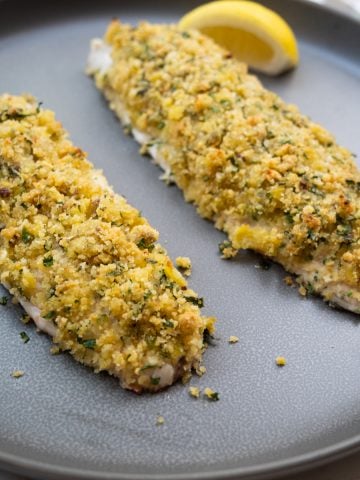
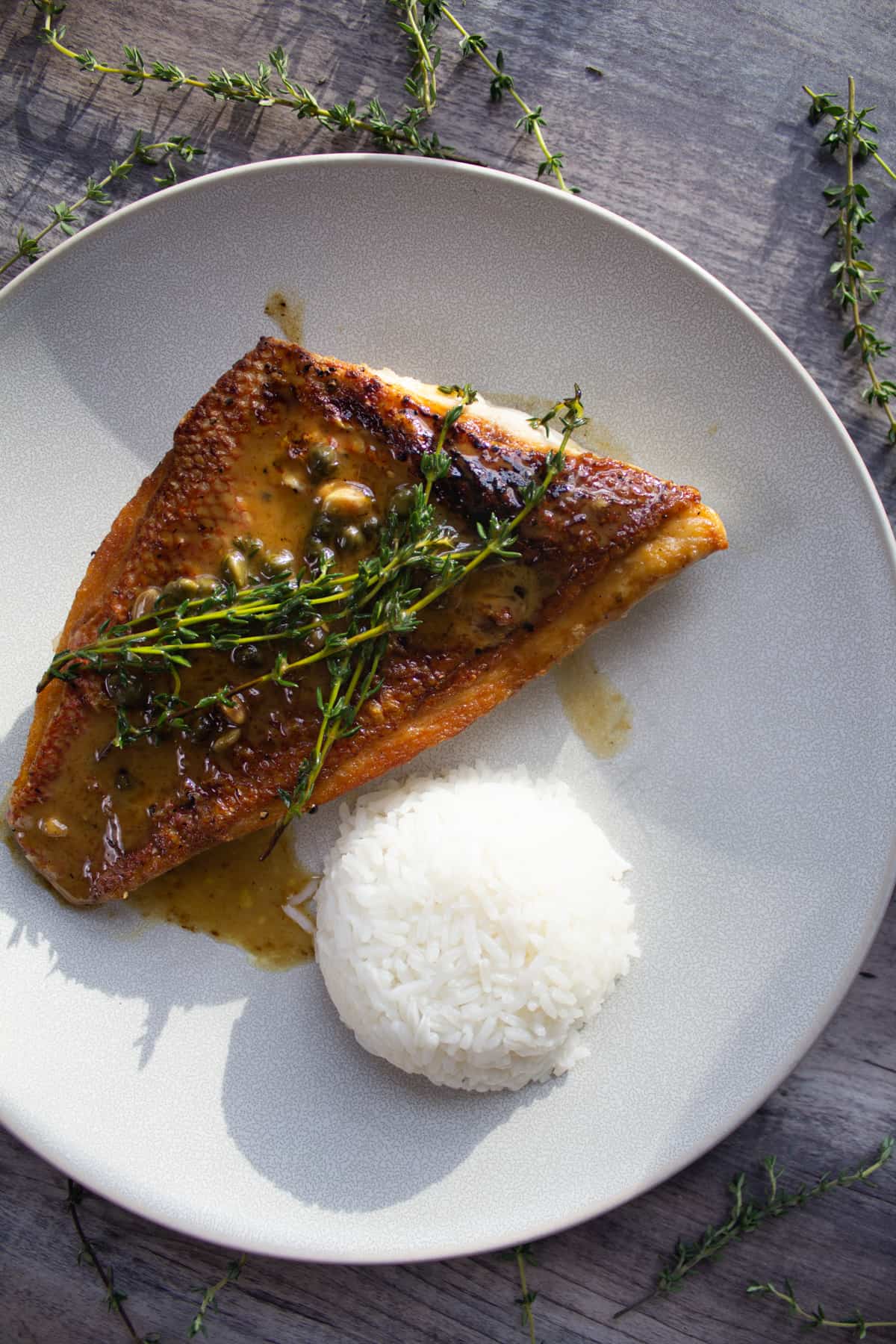
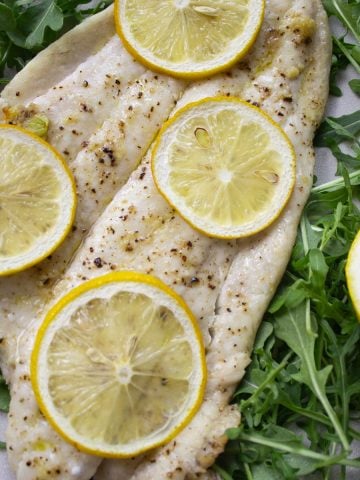
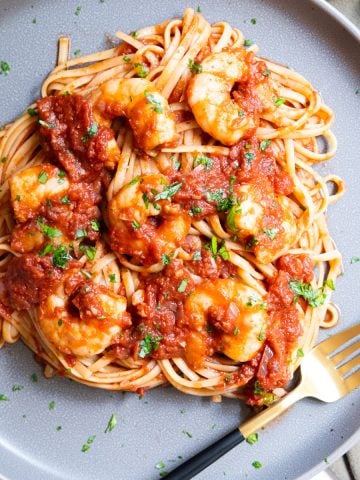
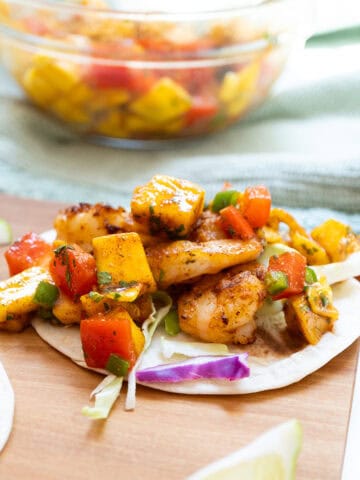
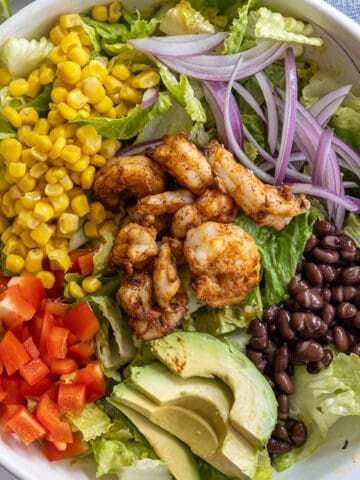
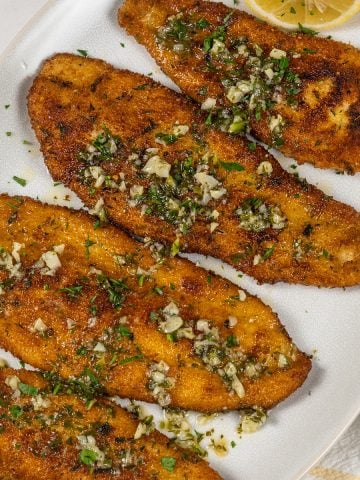

Joe
I never used to cook my salmon with a thermometer. I'm glad I read that here because the salmon was perfectly moist.